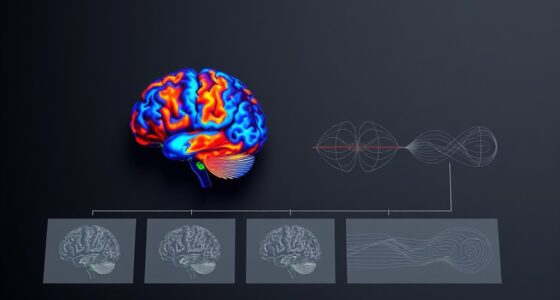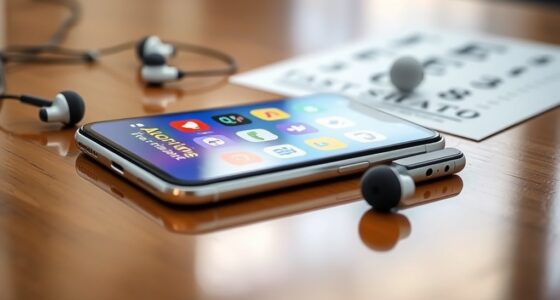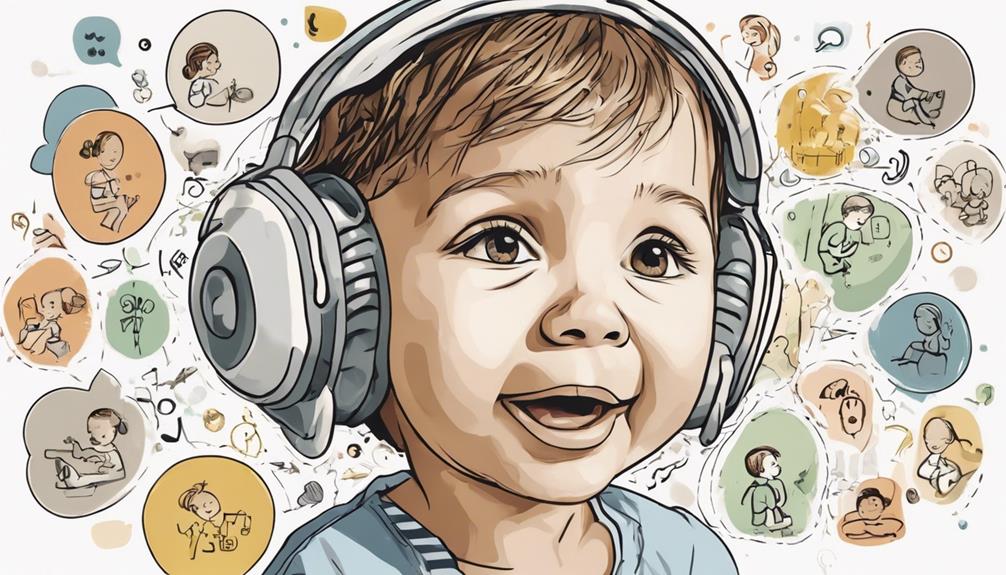In speech therapy, auditory closure acts as a decoder for unlocking the mystery of spoken language. It is crucial in improving communication abilities.
Have you ever wondered how it actually works in practice? Let's explore how auditory closure techniques can transform the way we perceive and process words, making a significant impact on our ability to comprehend and engage in meaningful conversations.
Key Takeaways
- Auditory closure enhances listening and communication skills crucial for speech therapy.
- It bridges gaps in speech recognition, improving comprehension and memory retention.
- Techniques in speech therapy develop auditory closure for better language processing.
- Tailored strategies assess and enhance auditory closure abilities for effective communication improvement.
Definition of Auditory Closure
In speech therapy, our understanding of auditory closure is the ability to fill in missing or distorted sounds, words, or sentences. This skill is crucial in language development as it enables individuals to comprehend and process auditory information effectively.
By engaging in activities such as sentence completion exercises, auditory closure plays a significant role in enhancing listening and speaking skills. For children facing speech and language difficulties, mastering auditory closure can greatly improve their communication abilities.
Through the implementation of auditory closure techniques, individuals can progress from passive listening to active participation in conversations. As speech therapists, we recognize the importance of honing auditory closure skills to facilitate better communication outcomes for our clients.
Importance in Speech Therapy
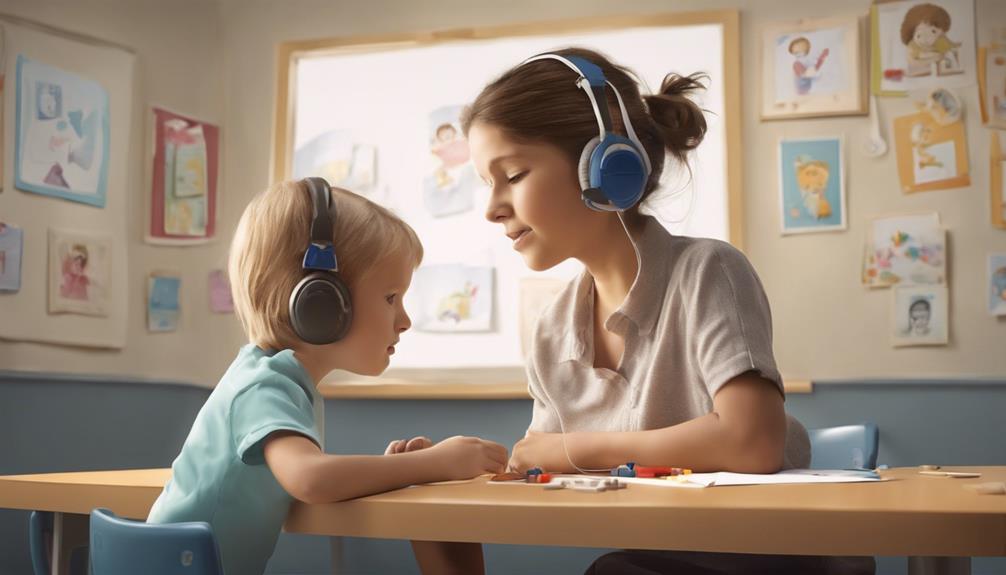
Utilizing auditory closure techniques in speech therapy enhances clients' listening and communication skills by encouraging active participation and memory retention. Developing auditory closure skills is crucial in speech therapy as it aids individuals in completing sounds or words, thus improving their language development. This technique is particularly beneficial for those with hearing impairments, cochlear implants, or language processing challenges. Speech therapists strategically incorporate auditory closure activities to stimulate active participation, memory, and word retrieval in their clients. By bridging gaps in understanding and promoting speech production, auditory closure plays a vital role in refining listening abilities. The table below further illustrates the importance of auditory closure skills in speech therapy.
| Benefits of Auditory Closure Skills |
|---|
| Enhances listening skills |
| Improves communication abilities |
| Encourages active participation |
| Supports memory retention |
| Stimulates word retrieval |
How Auditory Closure Works
When engaging in auditory closure activities in speech therapy, individuals are tasked with completing or filling in missing or distorted words within sentences.
Auditory closure plays a crucial role in enhancing auditory processing skills by requiring the brain to combine sounds to form complete words and understand incomplete sentences as a whole.
This process not only aids in improving listening and speaking abilities but also encourages active participation, leading to enhanced language development and memory retention.
Auditory Closure Skills Development
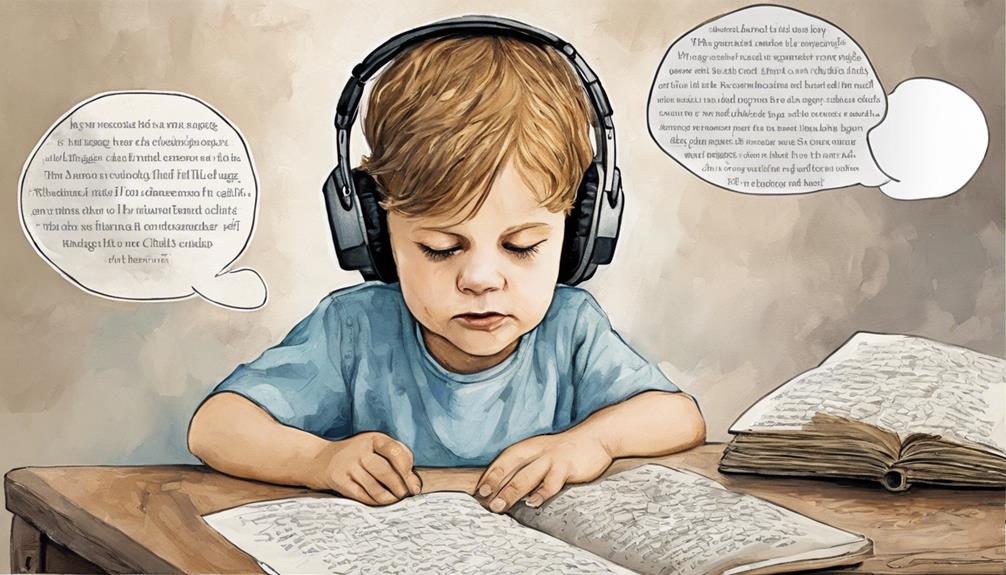
Exploring auditory closure skills development further reveals its pivotal role in honing listening and speaking abilities within speech therapy sessions. Enhancing listening skills is fundamental in improving communication capabilities.
Activities such as utilizing auditory closure cards or incorporating pauses in familiar songs can significantly boost auditory association and discrimination. These practices aid individuals in bridging the gap between recognizing speech patterns and independently formulating words, which is essential for language growth.
By engaging in auditory closure techniques, individuals can't only refine their listening skills but also actively participate in conversations with increased confidence. Moreover, implementing these techniques at home fosters creativity and encourages sustained engagement in communication tasks.
Particularly for children with hearing implants, speech therapy that integrates auditory closure methods proves to be instrumental in fostering effective speech and communication skills development. By focusing on honing auditory closure skills, individuals can make substantial strides in their listening abilities, thereby facilitating improved communication outcomes.
Impact on Communication
Enhancing listening and speaking abilities through auditory closure in speech therapy positively impacts overall communication skills development. By honing auditory closure skills, individuals can experience significant improvements in their ability to engage in meaningful conversations and express themselves effectively. This heightened proficiency in auditory closure can lead to various positive outcomes in communication.
- Individuals become more adept at understanding speech in noisy environments.
- Enhances the capacity to follow complex verbal instructions.
- Improves the ability to fill in missing information during conversations.
These benefits not only contribute to better communication skills but also foster confidence and independence in individuals. Auditory closure skills play a crucial role in facilitating clear and effective communication, paving the way for enhanced relationships and social interactions. By focusing on auditory closure in speech therapy, individuals can cultivate a strong foundation for successful communication across various contexts.
Auditory Closure Techniques

Let's explore key auditory closure methods that involve strategic pauses to prompt completion of speech patterns. Practicing these techniques is essential for enhancing listening and speaking skills, especially in the realm of speech therapy.
Repetition plays a vital role in reinforcing these auditory closure skills and fostering progress in communication abilities.
Key Auditory Closure Methods
How can auditory closure techniques be effectively utilized in speech therapy to enhance language development? Implementing these techniques can greatly benefit individuals working on auditory closure skills.
Here are key methods to consider:
- Using Everyday Phrases: Incorporate common phrases or sentences with predictable endings to encourage completion.
- Building Lists for Completion: Create lists of items or words where the last item is missing, prompting the individual to fill in the blank.
- Singing Songs with Pauses: Integrate songs with pauses, allowing time for the individual to complete the lyrics.
These methods foster active participation, enhance listening and speaking abilities, and support the transition from imitation to spontaneous speech generation.
Importance of Practice
To fully benefit from auditory closure techniques in speech therapy, consistent practice is key in honing listening and speaking skills effectively. Closure activities play a vital role in bridging the gap between auditory perception and language production.
Engaging in exercises that involve completing sentences or filling in missing words helps individuals develop their ability to understand and process spoken language more efficiently. By practicing these techniques regularly, individuals can enhance their auditory processing abilities, memory retention, and word retrieval skills.
Through repetition and dedication to practicing auditory closure activities, clients can improve their overall communication skills and boost their confidence in verbal interactions. Emphasizing the importance of practice in auditory closure techniques is essential for maximizing progress in speech therapy sessions.
Role of Repetition
Repetition plays a crucial role in auditory closure techniques by encouraging active engagement and enhancing memory retention for improved language development. When working with auditory stimuli in speech therapy, the strategic use of repetition can yield significant benefits:
- Pausing to allow individuals to complete sentences or phrases promotes active listening and comprehension.
- Prompting individuals to fill in missing words or sounds through repetition strengthens their language processing skills.
- By implementing repetition techniques, therapists can enhance memory retention, aiding in word retrieval and overall language development progress.
These practices not only foster engagement but also help individuals transition from imitation to independent speech generation, facilitating the achievement of speech therapy goals.
Auditory Closure Vs. Auditory Discrimination
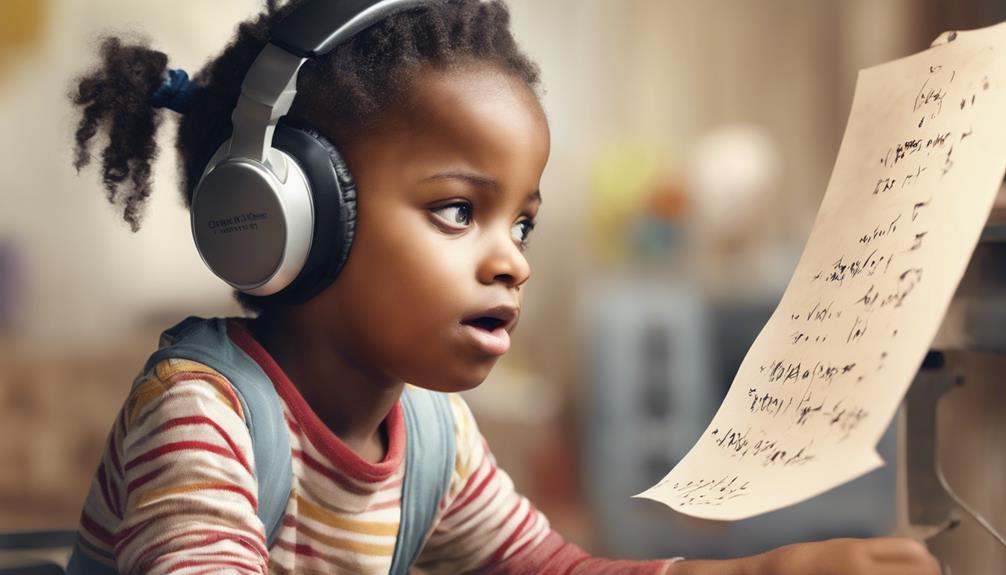
When comparing Auditory Closure to Auditory Discrimination, we highlight their distinct roles in language comprehension.
Auditory Closure involves piecing together incomplete information, while Auditory Discrimination focuses on distinguishing between sounds.
Both skills play vital roles in speech therapy by enhancing language processing and understanding.
Role in Comprehension
Auditory closure plays a crucial role in comprehension, distinguishing itself from auditory discrimination by focusing on filling in missing parts of words or sentences to aid in understanding. When considering auditory closure skills in speech therapy, it's important to note the following:
- Enhances Listening Skills: Practicing auditory closure helps individuals improve their ability to listen actively and comprehend spoken language effectively.
- Promotes Better Understanding: By filling in gaps in auditory information, auditory closure contributes to a clearer understanding of the intended message or meaning.
- Facilitates Communication: Mastering auditory closure is vital for enhancing communication skills and language processing abilities in individuals undergoing speech therapy.
Therapy Techniques
Building on the foundational role of auditory closure in comprehension, therapy techniques distinguish between auditory closure and auditory discrimination by emphasizing different aspects of auditory processing to enhance language skills.
Auditory closure skills focus on completing missing auditory information to improve listening and language abilities. In therapy, exercises involving sentence or phrase completion help individuals process incomplete sounds, enhancing comprehension and communication. These techniques differ from auditory discrimination, which involves distinguishing between various sounds.
Importance in Learning
Understanding the distinction between auditory closure and auditory discrimination is crucial for maximizing language learning potential in speech therapy. Auditory closure skills play a vital role in enhancing comprehension and communication abilities.
Here are three key reasons why auditory closure is essential in learning:
- Enhances Language Development: Auditory closure encourages individuals to process and interpret auditory stimuli as a whole, boosting language skills.
- Improves Engagement: Activities promoting auditory closure help individuals transition from passive listening to active participation, fostering interaction in therapy sessions.
- Strengthens Language Proficiency: Incorporating auditory closure techniques can lead to better word retrieval, memory, and overall language proficiency by reinforcing the connection between auditory processing and verbal expression.
Auditory Processing and Auditory Closure
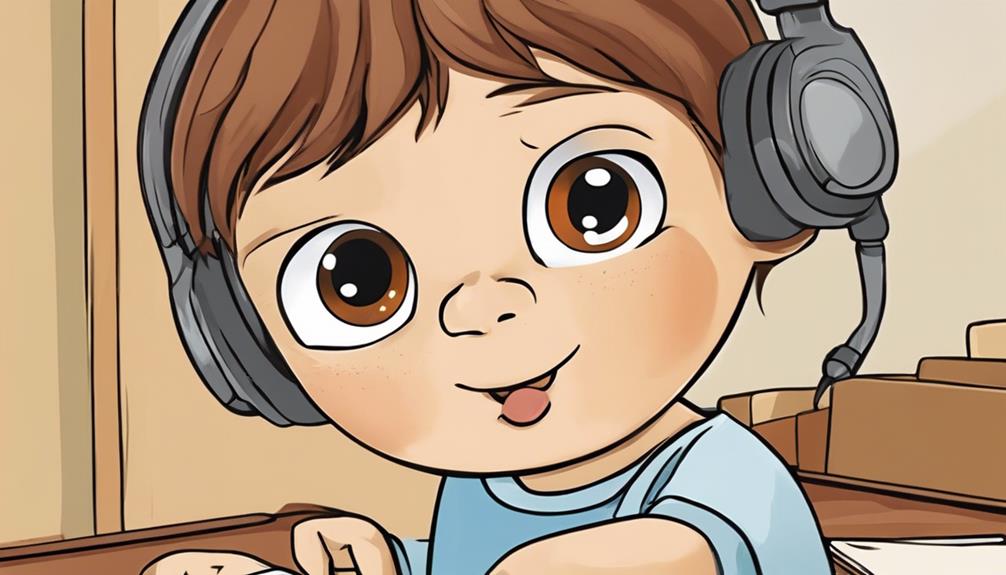
Exploring how the brain processes sounds, particularly when filling in missing words, is crucial in speech therapy for developing comprehensive language skills. Auditory closure skills are fundamental in this process as they enable individuals to understand complete sentences even when some words are distorted or missing. By honing auditory closure abilities, individuals can improve their listening and speaking skills, which is especially beneficial for children's language development.
In speech therapy, implementing techniques that focus on auditory closure can facilitate the transition from imitating to independently generating speech. This practice not only enhances language comprehension but also boosts word retrieval and memory skills. Activities such as using auditory closure cards or practicing paired phrases are effective in improving auditory association and discrimination during therapy sessions. By engaging in these exercises, individuals can strengthen their auditory processing abilities, leading to more effective communication and language proficiency.
Auditory Closure in Language Development

As we explore Auditory Closure in Language Development, we uncover its significant role in learning and its profound impact on communication skills.
By engaging in activities that promote sentence completion and word retrieval, individuals, especially children, can enhance their listening and talking abilities.
These techniques not only foster language development but also encourage active participation in conversations, contributing to overall language proficiency.
Role in Learning
Implementing auditory closure techniques in speech therapy plays a vital role in enhancing language development by fostering listening and speaking skills essential for communication. Auditory closure in learning:
- Encourages sentence completion, aiding in transitioning from imitating to generating speech.
- Enhances word retrieval, memory, and auditory association skills.
- Supports children with hearing implants in improving communication skills and confidence through transitioning from listening to verbal responses.
Using fun activities like singing familiar songs and pausing for the child to finish the line can make practicing auditory closure enjoyable and effective in everyday interactions.
Impact on Communication
Auditory closure in speech therapy significantly impacts communication by enhancing listening and talking skills through the completion of sentences. This skill is crucial in language development as it helps individuals progress from imitating sounds to spontaneously forming complete sentences. By implementing auditory closure activities, such as fill-in concept cards, at home, individuals can improve word retrieval, memory, and language association. The use of auditory closure aids in targeting auditory discrimination, leading to improved communication skills and language comprehension. This active participation in conversations fosters a deeper understanding of language and promotes overall communication abilities.
| Auditory Closure in Communication | |||
|---|---|---|---|
| Enhances listening skills | Progresses from imitation to spontaneous speech | Fosters word retrieval, memory, and language association | Boosts communication skills and language comprehension |
Assessing Auditory Closure Abilities
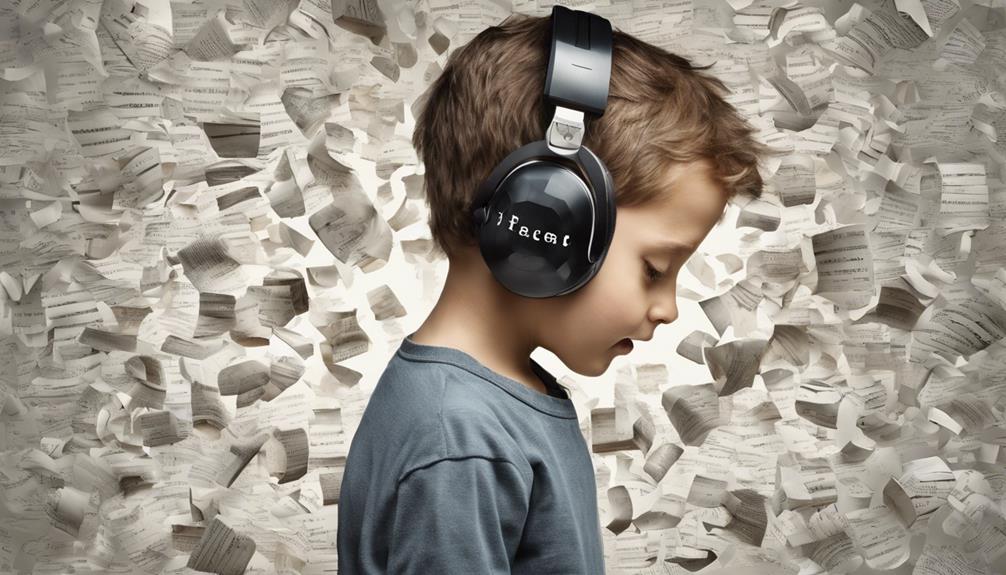
Assessing one's auditory closure abilities provides valuable insight into their language processing skills and aids in tailoring targeted therapy strategies for improvement.
When evaluating auditory closure skills, therapists can consider the following:
- Accuracy in Filling in Missing Words: Observing how well an individual can accurately fill in missing or distorted words in sentences provides valuable information about their auditory closure abilities.
- Speed of Processing: Assessing how quickly a person can make sense of incomplete auditory information helps determine their processing speed and efficiency.
- Consistency in Comprehension: Evaluating the consistency of a client's comprehension across different tasks and scenarios gives a comprehensive view of their auditory closure skills.
Auditory Closure Challenges

Individuals facing auditory closure challenges may experience difficulties in accurately processing and interpreting incomplete auditory information. These challenges can stem from various factors, including neurological issues affecting auditory processing pathways, past traumas, ear infections, genetics, and environmental influences such as loud noise exposure.
In children, delayed speech or language development is often associated with struggles in auditory closure. Auditory closure involves the ability to piece together sounds to form complete auditory information, and when this process is impaired, it can manifest in behaviors like frequently asking for repetition, struggling to follow instructions, and facing difficulties in noisy settings.
Recognizing the signs of auditory closure challenges is crucial in addressing them effectively and providing the necessary support for individuals experiencing these difficulties. By understanding the underlying causes and manifestations of auditory closure issues, therapists and caregivers can develop targeted strategies to help improve auditory processing and overall communication skills.
Strategies for Improving Auditory Closure
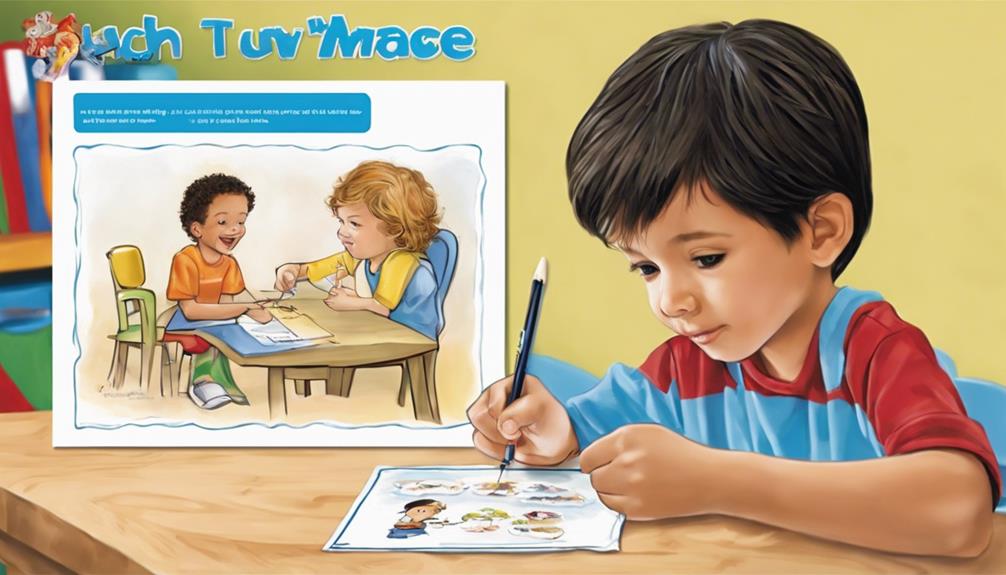
Transitioning from the challenges of auditory closure, effective strategies for improving this skill in speech therapy involve implementing various techniques to enhance comprehension and communication abilities. When working on auditory closure skills, speech therapists can consider the following:
- Utilizing Visual Aids: Incorporating visual cues alongside auditory input can help individuals better understand and fill in missing words or sounds.
- Providing Clear and Concise Instructions: Offering straightforward and easy-to-follow directions can facilitate the processing of information and improve auditory closure abilities.
- Creating Quiet Spaces for Focused Learning: Minimizing background noise and distractions during therapy sessions can enhance concentration and promote successful completion of auditory tasks.
Auditory Closure in Different Age Groups
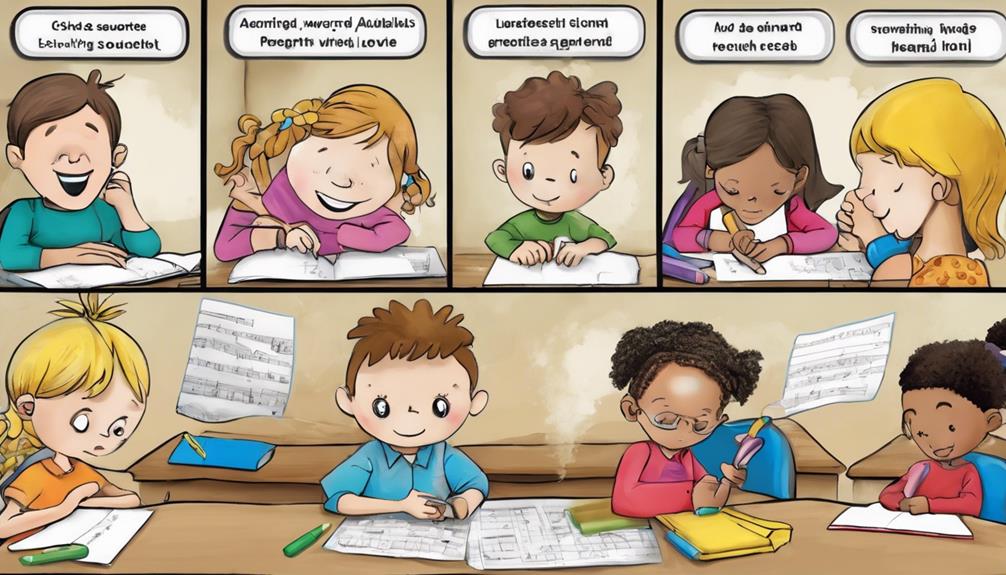
When considering auditory closure in different age groups during speech therapy, tailoring intervention strategies to the specific developmental stages is crucial for effective skill enhancement. Understanding the nuances of auditory closure skills across age ranges enables therapists to design personalized interventions that cater to the individual's needs. Below is a table illustrating how auditory closure skills may vary based on age groups:
| Age Group | Auditory Closure Skills | Intervention Activities |
|---|---|---|
| Young Children | Completing simple words or sentences | Matching sounds to pictures |
| Teenagers | Deciphering complex auditory stimuli | Filling in missing elements in longer sentences |
| Adults | Analyzing intricate auditory information | Repeating sequences of complex sounds for memory enhancement |
Customizing auditory closure activities to align with the cognitive abilities and linguistic development of each age group is vital for promoting language proficiency and communication skills. By tailoring interventions to the specific needs of different age groups, therapists can optimize the effectiveness of auditory closure therapy sessions.
Role of Auditory Closure in Learning
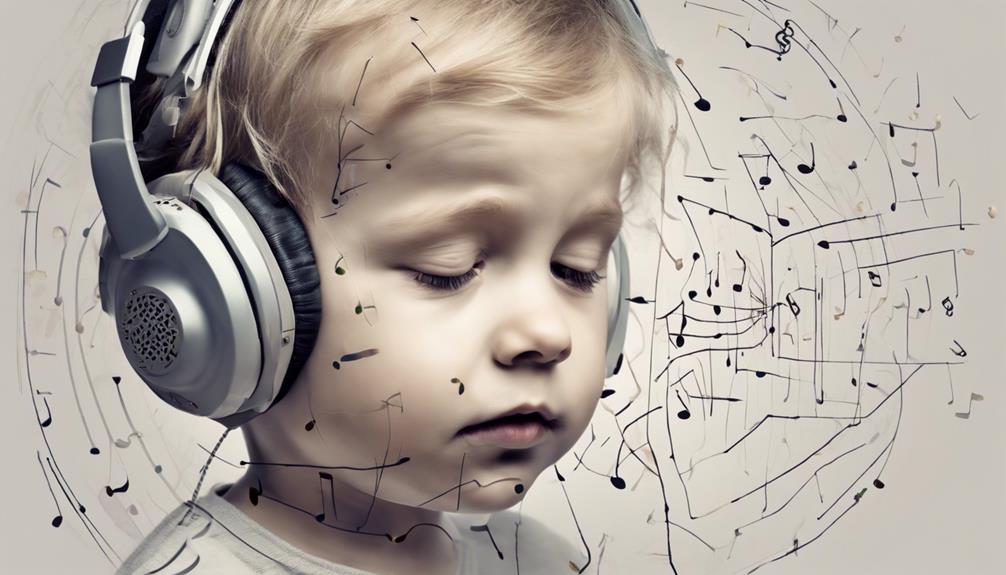
As we explore the role of auditory closure in learning, we recognize its significance in enhancing listening skills and fostering speech development.
It plays a crucial part in language acquisition by encouraging active engagement and completion of verbal cues.
Learning and Auditory Closure
Understanding the pivotal role of auditory closure in learning is essential for enhancing language development and communication skills. Auditory closure skills contribute significantly to fostering effective learning environments and improving language acquisition. Here are a few key points to consider:
- Engaging in activities that require completing phrases or sentences helps strengthen word retrieval and memory.
- Encouraging the use of auditory closure techniques in daily interactions can enhance listening and speaking abilities.
- Implementing auditory closure strategies, such as pausing to allow for sentence completion, promotes active participation in conversations and stimulates creativity in learning processes.
Importance in Speech
Transitioning from learning environments to speech therapy, auditory closure plays a pivotal role in enhancing communication skills by bridging gaps in auditory information processing. Auditory closure is crucial for improving listening, speaking, and language development, particularly in children.
By engaging in activities that require completing sentences or words, individuals can actively participate and enhance comprehension. Incorporating auditory closure techniques in therapy sessions helps individuals transition from passive listening to generating verbal responses. This structured approach to language learning not only boosts confidence but also enhances overall communication abilities.
Through the practice of auditory closure in speech therapy, individuals can develop essential skills that are fundamental to effective communication.
Enhancing Listening Skills
Enhancing listening skills through auditory closure techniques is a fundamental aspect of improving communication abilities in speech therapy. Auditory closure plays a vital role in honing listening skills by helping individuals combine sounds into words, fill in missing or distorted words, and process words over time to understand them as a whole effectively.
- Enhancing auditory closure supports better reading comprehension.
- It aids in following directions accurately.
- Improving auditory closure helps individuals function more effectively in noisy environments.
Real-Life Applications of Auditory Closure

In real-life scenarios, applying auditory closure techniques can significantly enhance communication skills, especially in children's language development. By incorporating auditory closure activities into daily routines, children can improve their listening and speaking abilities. Here are some practical real-life applications of auditory closure techniques:
| Real-Life Application | Description | Benefits |
|---|---|---|
| Pausing during familiar songs | Pause during a song for the child to finish the lyrics. | Enhances listening skills and encourages active participation. |
| Building lists for activities | Create lists of items needed for activities and prompt completion. | Reinforces auditory closure skills and improves memory. |
| Pairing phrases for completion | Use phrases like 'fish and chips' to encourage completion in conversations. | Fosters active engagement in communication and language development. |
These real-life applications provide practical ways to incorporate auditory closure techniques into everyday interactions, supporting children in developing their language skills effectively.
Frequently Asked Questions
What Is an Example of Auditory Closure?
An example of auditory closure involves pausing during a sentence, prompting the listener to finish it. This technique enhances processing and understanding of incomplete auditory information.
In therapy, such activities aid in developing listening, language, and communication skills, improving speech production and comprehension.
What Is the Auditory Closure Skill?
When we consider the auditory closure skill, we're examining the ability to piece together fragmented or distorted words in speech. This skill involves processing sounds in real-time to comprehend complete sentences accurately.
It's crucial for understanding oral information effectively, aiding in language development and communication. By mastering auditory closure, individuals can bridge gaps in spoken language, enhancing their overall comprehension and communication skills in speech therapy.
How Do You Teach Auditory Closure?
When we teach auditory closure, we use pauses in speech to prompt completion, aiding in language development. Strategies like familiar songs and actions encourage responses.
At home, implementing these techniques can boost children's listening and speaking abilities. By incorporating auditory closure activities, we foster creativity, engagement, and improved communication skills.
These techniques in speech therapy help individuals transition from listening to verbal responses, enhancing speech development.
What Is the Problem With Auditory Closure?
The problem with auditory closure can lead to difficulties in understanding speech when parts of the message are missing. This can result in confusion, misunderstandings, and frustration during conversations. It impacts communication, learning, and social interactions.
Addressing auditory closure challenges is crucial to ensure individuals can effectively process and comprehend auditory information. Proper support and strategies can help mitigate the negative effects of auditory closure problems on daily life.
Conclusion
In conclusion, auditory closure is a vital skill in speech therapy that helps individuals fill in missing information to understand speech as a whole. It plays a crucial role in language development and communication, fostering better listening and speaking abilities.
By implementing auditory closure techniques, such as completing familiar songs, we can enhance word retrieval and memory. So, let's keep working on honing our auditory closure skills to improve our overall communication skills and connect with others on a deeper level.




